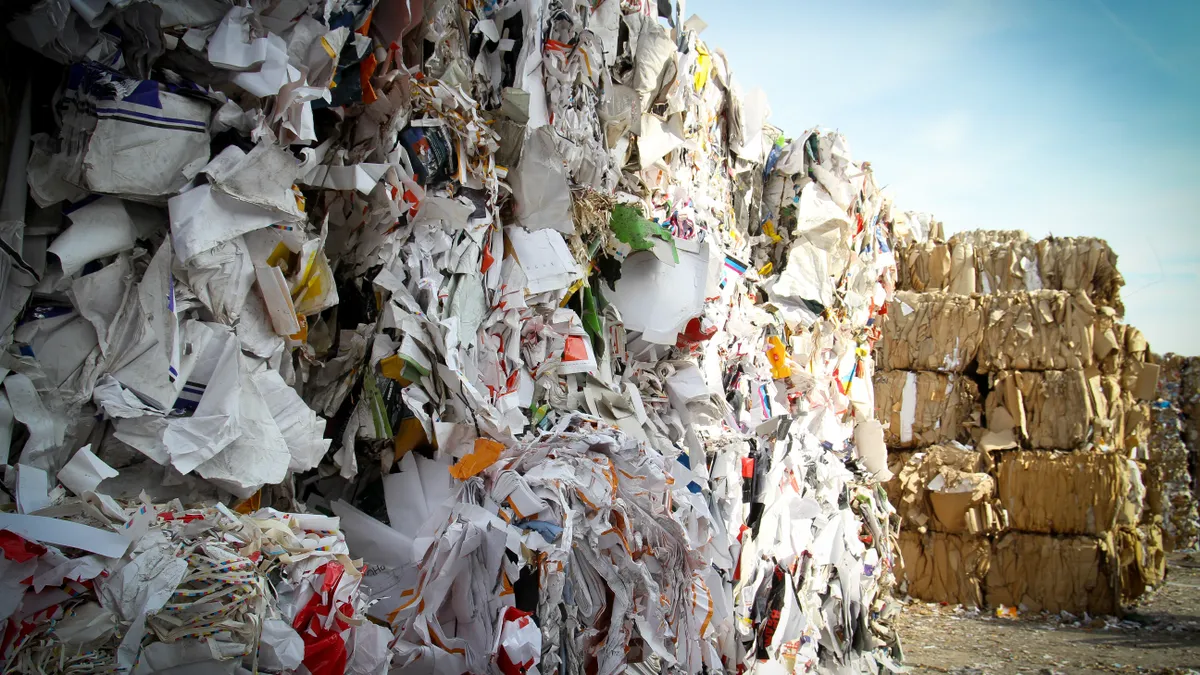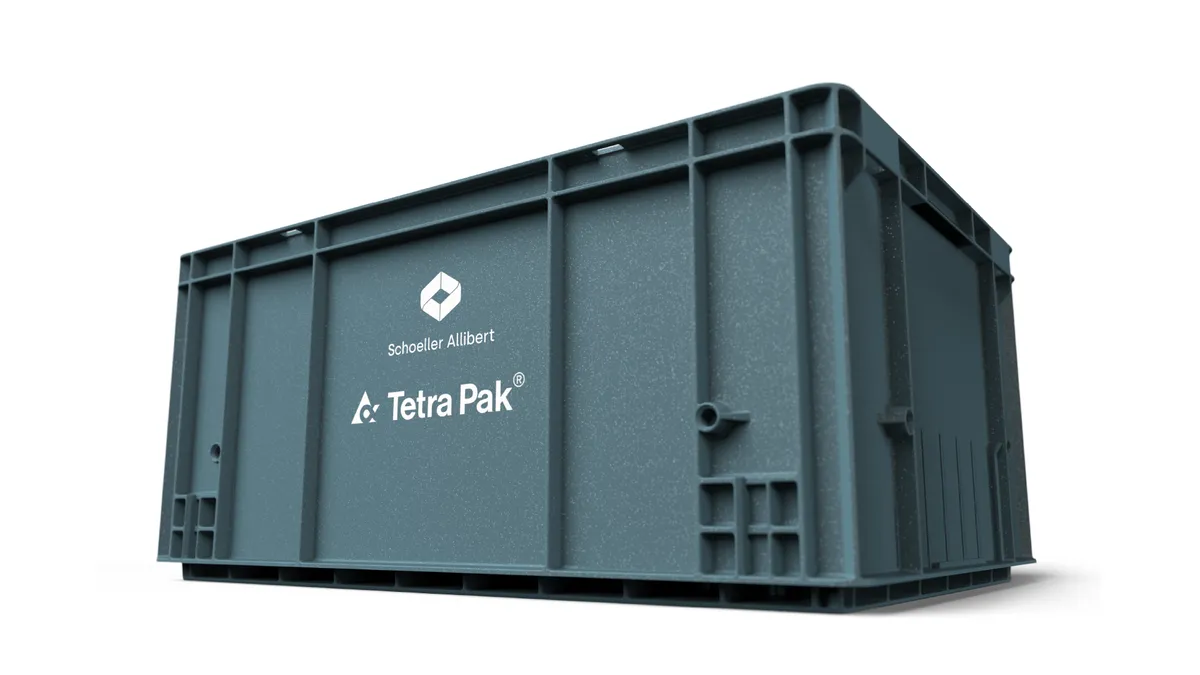In the aftermath of China's recyclable scrap import bans and tightened contamination standard — as well as subsequent restrictions from other Southeast Asian countries — domestic market development has regained a sense of priority after many feel it lagged in recent years. Except now, industry professionals say, modern end market development is going to look different.
Last fall, the EPA held what was described as its first Recycling Summit, intended to bring together government and private sector leaders to strengthen the U.S. recycling industry. That event, and a pledge signed by participants, outlined four key action areas – one of which is "strengthening secondary materials markets."
In the months since then, as some people have focused on the recycling industry’s negative fallout from China's changes, others have been touting the progress on growing domestic end markets – especially in the paper and plastics sectors.
"If we're going to solve this situation, we have to create more domestic markets," said Wayne Gjerde, recycling market development coordinator at the Minnesota Pollution Control Agency and a National Recycling Coalition (NRC) board member. "Sometimes need and opportunities don't always come together at the same time. Sometimes you have to create the opportunity.”
Back to the beginning
The recycling industry has undergone changes during the last 30 years, including market fluctuations, the types of materials managed and how materials are collected and processed. End market development is another area that has been in flux and looks different now than it did when Americans began recycling en masse in the late 1980s and early 1990s.
Betsy Dorn, principal at Circular Matters, was a recycling consultant for the EPA's grant programs "back in the '80s when all the recycling market development used to go on." She has seen changes to recycling end market development, especially which entities lead the charge. "Back in the '80s and '90s, recycling market development was largely a focus of state governments and the EPA," she said.
"A lot of programs came online in the '90s" and put a focus on "creating capacity at the state level," Gjerde said, citing Minnesota, California and Pennsylvania as industry leaders. Those states are among the few that consistently maintained end market development agencies and initiatives while other state programs waned.
China's effect on U.S. recycling markets isn't a modern phenomenon. Around 2003, China began extensively purchasing foreign recyclable materials and "there became less of a sense of need to do domestic recycling end market development," Dorn said. After that, more work went into "supply development — getting more recycling programs in place — and there was less focus on market development."
Up to about "10 years ago you would see some of the biggest investments coming from [government] end market development grants," said Kim Holmes, senior director of recycling and diversion at the Plastics Industry Association. "But to cultivate demand, it's really got to come from private industry."
Measuring progress also depends on how you define "end market development." According to Dylan de Thomas, vice president of industry collaboration at The Recycling Partnership, it's important to remember that "recycling is a business. And while market development still should occur and people welcome support in that space, the markets themselves react as well ... Where there was a heavier reliance on overseas markets, you're seeing a bigger opportunity for the free market to respond."
“If we're going to solve this situation, we have to create more domestic markets ... Sometimes need and opportunities don't always come together at the same time. Sometimes you have to create the opportunity.”

Wayne Gjerde
Minnesota Pollution Control Agency & National Recycling Coalition
In the past, some corporate end market development looked similar to how the growing field does today — "a corporation identified a benefit to using a commodity to put into their new product versus using the virgin piece… whether that was financial [or] whether it was because they wanted to do something right for the environment," said Jason Pelz, vice president of recycling projects for the Carton Council of North America and circular economy director for Tetra Pak. "Where the government side came in was maybe they would ask for help building a mill or putting in a system."
Although experts say the corporate sector has a more pronounced presence in the recycling space now than 20 years ago, recycling was not devoid of corporate or association involvement during its formative years. The NRC launched the Buy Recycled Business Alliance decades ago, in which companies voluntarily committed to increase their purchase of recycled content products.
Dorn said today's corporate market development puts a large focus on two areas: overcoming technological barriers such as with sorting and recovering materials from a MRF, and then figuring out what to do with those materials. That includes determining how to get more recycled content products in the marketplace and stimulate demand for them.
In addition to greater corporate involvement, more industry nonprofits and associations are emerging and working toward solutions — especially as new items are accepted for recycling. For example, The Recycling Partnership and the Carton Council both formed in the past 10 years. These types of organizations launch numerous initiatives to raise awareness about recycling certain materials and using recycled content — such as the The Association of Plastic Recyclers' Demand Champions program — and many leverage grants or collaborations with other organizations to improve end markets.
The current level of recycling end market development activity is seen as a good start, but even more needs to be done as demand for recycled content grows.
"The system as it exists is not going to be sufficient in supply to meet that need,” Holmes said. “We have to fill the gap and accelerate research and development and infrastructure.”
Cutting contamination
Recently, “contamination” has been one of the most uttered words behind "China" in recycling discussions. The U.S. hasn’t adopted recyclable material contamination standards like China, but quality plays a prominent role in determining whether a material can find a home domestically.
"The supply is here, but not in the form or quality people necessarily need to use it," Holmes said. "If [processors] know they can sell material, they'll invest" in the appropriate equipment upgrades. Sorting and processing infrastructure upgrades are a key method to reduce recyclable material contamination and have gained favor as strong areas of opportunity for investment.
High-quality processed materials are in demand and capable of being used in more end-product applications than low-grade materials. “We really believe in quantity and quality… Without that quality, you can't have a market," de Thomas said. "That's why we’re dedicating so many of our resources to fighting contamination."
Companies and partner organizations continue devising new ways to use high-quality material and are getting away from the idea of re-manufacturing it into exactly the same products. For example, PET bottles are finding new homes as auto parts, and "films are not necessarily going back into film applications, but a broader range of products" such as building and construction materials, Holmes said.
"We can't think in only little loops … We have to think in bigger models than just a 'bottle-to-bottle' system," she said. "That's what's been exciting with some of our end market development work… finding where those opportunities are and connecting the industry segments."
The next chapter of WA's recycling story was just signed by @GovInslee. The Sustainable Recycling Act of 2019 is big-time legislation that will improve how #WArecycles! Thank you to Rep. @JaredMead and Sen. @MonaDas for your support and leadership. #waleg pic.twitter.com/7dWHz5DCuZ
— Director Maia Bellon (@maiabellon) April 29, 2019
Bringing it all together
Collaboration is crucial to advancing modern recycling end markets, and government, private industry, nonprofits and even the public are all seen as having a role in the recycling industry’s success. Thankfully, the individual players are said to be doing a better job of working together than in decades past.
For the Carton Council, "there were times years ago where we felt… there were very few folks out there willing to sit down and talk, but the number of folks willing to talk has increased," Pelz said. "For the whole recycling value chain to work you can't have a broken piece. Either you’ve got all the links working, or it doesn’t stay together.”
Although recycling coalitions and associations secure funding to bolster and modernize domestic recovery and recycling systems, “there is still a role for federal and state agencies to play, so I would encourage them to stay engaged on this issue,” Holmes said. “That support — and that of private industry — will help us reach the point of change.”
Some of the local government efforts currently underway include Phoenix awarding a 10-year contract to turn mixed plastics into fuel at a local business campus and Boston considering recyclable material economic development approaches in its "zero waste" plan.
Recent state examples include Colorado's NextCycle business incubator program to improve recyclable material end markets and the state of Washington's newly passed law authorizing the creation of a Recycling Development Center. Texas also has end market development legislation in the works similar to Washington's. Other states, such as Massachusetts and California, continue to offer recycling business development grants.
“No matter what, there's a role for government to play,” de Thomas said. “It’s thrilling that the EPA is paying so much attention to recycling as an issue.”
But Dorn cautions that regardless of who’s involved, those working on end market development should carefully consider what has been attempted and accomplished in the past before launching new projects.
In some cases, she said, “activities are being planned and executed today without even really any awareness of what used to happen… and are not building on past markets." She recommends devising a holistic market development strategy instead of one-off projects, in addition to integrating recycling end market development into economic development efforts.
“In the past, it was recognized that creating jobs through recycling-based businesses and building markets for recyclable materials should be a part of the ongoing economic development activity going on across the country at all levels of government, and involving the private sector,” Dorn said. "That's how we’re going to get to the circular economy, by it being integrated into the fabric of how our economy works throughout the whole country."
In a recent report, the Oregon Department of Environmental Quality similarly offered words of caution for end market development. It urged people to figure out exactly which problem they're trying to solve because certain elements — such as a new package or product with recycled content — might be viewed favorably from an end market development standpoint, but not from the standpoint of conserving resources or reducing pollution.
"We're getting back to what we did before… creating end markets in various states” and also across regions with inter-state projects, Gjerde said. He points to work in Minnesota where governmental end market development builds on past work, yet centers on materials that currently are locally abundant – such as agricultural plastic, as well as mixed paper that can be made into compostable food service items, egg cartons and insulation.
"That's how we’re going to get to the circular economy, by it being integrated into the fabric of how our economy works throughout the whole country."

Besty Dorn
Circular Matters
Just as new uses for products continue to emerge as the industry evolves, the recyclable materials receiving attention for end market development have shifted over time. Past attention went more toward recovered fiber materials, whereas now the attention is on plastics, de Thomas said. “There is a greater complexity to the type of plastics in the market now so we’re responding to that. The paper market is more settled now than it was back then, so you’re seeing more of the free market responding.”
Despite the current challenges, many believe the recycling industry will overcome its issues and move forward.
“I don't think we should give up, I think we should try to fix where it needs to be fixed,” Pelz said. When it comes to end market development, “I do think [we’re] making a dent. Is it making a dent quick enough? Probably not. But the truth is, I don’t know that it can go any faster [because] developments take a while… It never moves as quickly as you would like it to.”
Gjerde agrees that "it's going to take time, money and effort to get where we need to go," especially with continuing the current end market development momentum, he said. “Recycling is not dead, it’s just going to change."























